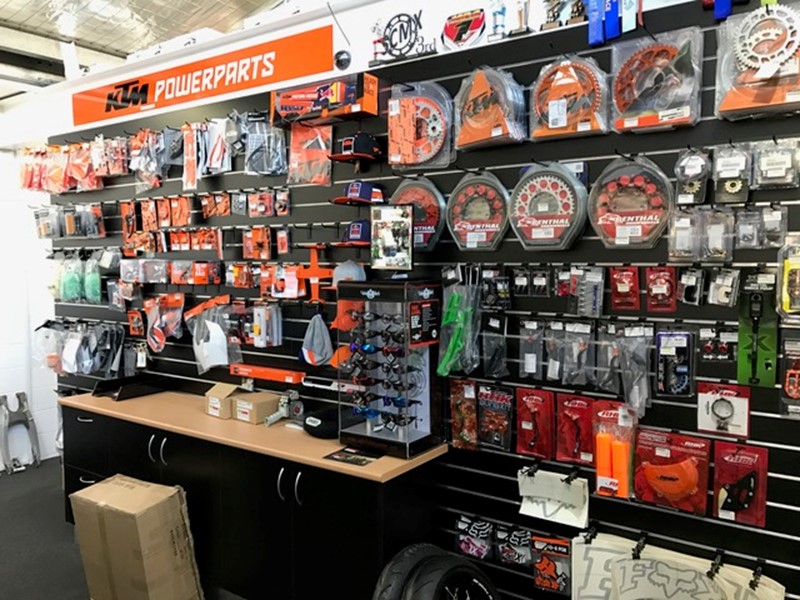Release Performance with Premium Motox Parts NZ Available Here
Release Performance with Premium Motox Parts NZ Available Here
Blog Article
Understanding the Necessary Parts of a Bike: A Comprehensive Overview for Enthusiasts
For bike lovers looking to boost their riding experience and guarantee their bikes run smoothly, recognizing the essential components of a bike is extremely important. Each component, from the engine's elaborate functions to the essential duty of the braking systems, not just impacts efficiency however additionally safety and convenience. This guide will stroll through the basic components that every motorcyclist need to recognize with, allowing notified options in both upkeep and prospective upgrades. As we begin this expedition, one must ask: just how does each part engage to create the smooth ride every fanatic seeks?
Engine Elements

The camshaft plays a vital duty in regulating the timing of the engine's valves, making sure the accurate opening and closing necessary for effective gas and air intake, along with exhaust expulsion. This timing is crucial to preserving ideal engine efficiency and performance. In addition, the carburetor or gas shot system, depending upon the motorbike model, is in charge of mixing air with fuel in the appropriate proportion for burning.
The cooling system, either air or liquid-based, functions to keep the engine's temperature level within functional restrictions, avoiding getting too hot and guaranteeing durability - mx gear nz. Each component, diligently made and integrated, adds to the seamless procedure of the engine, defining the bike's power output and total performance
Transmission System
Important to the motorbike's capability, the transmission system guarantees effective power transfer from the engine to the wheels. This system makes up numerous important parts, including the clutch, gearbox, and last drive, each playing an important function in translating the engine's power into movement. The clutch, generally operated by a hand bar, offers to engage and disengage the engine from the transmission, enabling for smooth gear changes and controlled velocity.
The gearbox, often described as the transmission correct, includes a set of equipments that bikers can manually shift via to change the bike's rate and torque outcome. These gears are organized in a series that enables the motorbike to increase smoothly and keep optimum engine efficiency across various rates. Many motorcycles make use of a sequential transmission, needing the motorcyclist to change gears in a fixed order.
Braking Mechanisms
While recognizing the transmission system is key to utilizing a motorbike's power, equally important is the capacity to control and quit that power properly, which is where braking mechanisms enter into play. Brakes are vital for safety and performance, offering the motorcyclist with the required control to navigate various surfaces and problems. Commonly, bikes include two sorts of stopping systems: disc brakes and drum brakes.
Disc brakes are much more common in modern motorbikes due to their remarkable performance. This system provides far better best adventure riding boots warmth dissipation, consistent performance, and enhanced quiting power, particularly in damp conditions.
On the other hand, drum brakes, though less typical, are still located in some motorcycles. They function by pressing brake shoes versus the internal surface area of a drum attached to the wheel. While typically much less reliable in heat dissipation and stopping power, drum brakes are easier and extra cost-effective.
Comprehending these braking systems' subtleties allows motorcyclists to preserve their motorcycles correctly and value the engineering that makes sure risk-free and effective quiting.
Suspension and Guiding
Suspension and guiding systems are important elements that significantly affect a motorbike's handling and experience comfort. The suspension system, consisting of forks at the front and shock page absorbers at the rear, takes in road irregularities, improving stability and control. Front forks, upside down or usually telescopic, compress and rebound to mitigate effects, while rear shock absorbers keep tire contact with the road, crucial for grip and safety and security.
Guiding, focused around the handlebars, attaches the biker to the bike's directional control. The steering head bearings guarantee smooth operation, permitting specific maneuverability. Appropriate alignment and upkeep of these bearings are important for foreseeable steering action and reducing motorcyclist exhaustion.
The suspension's adjustability is another crucial element; preload, damping, and rebound setups permit modification to fit numerous riding conditions and designs. This flexibility is crucial for maximizing performance, whether browsing city roads or tackling rugged routes. Technologies like digital shock absorber provide real-time modifications, improving trip high quality throughout varied surfaces.

Electrical Systems
After making certain a smooth and controlled adventure via reliable suspension and guiding systems, interest turns to the electric systems, a crucial aspect of modern motorbikes. These systems play an important role not just in beginning the engine however also in powering numerous elements that improve the performance and security of the motorcycle.
At the heart of a motorbike's electrical system is the battery, which shops electrical energy necessary for starting the engine and powering complementary systems - motocross parts nz. The generator or generator, coupled with the rectifier-regulator, makes certain the battery continues to be charged while the bike is in procedure, transforming mechanical energy into electrical power and keeping voltage degrees
The ignition system, an additional critical part, is in charge of firing up the air-fuel combination in the engine's cylinders. Modern motorcycles frequently use an electronic ignition system, providing greater effectiveness and integrity contrasted to conventional systems.
Lighting systems, including headlights, tail lights, and indications, are additionally vital, making sure exposure and safety and security for the cyclist. Added electronic parts such as sensing units, control units, and shows add to sophisticated features like gas shot management, anti-lock stopping systems (ABDOMINAL MUSCLE), these details and electronic dashboards, even more boosting the riding experience.
Final Thought
A thorough comprehension of a bike's crucial elements, consisting of the engine, transmission system, stopping devices, suspension, steering, and electric systems, is essential for fanatics aiming to optimize efficiency, convenience, and security. Proficiency of these elements permits informed choices regarding upkeep and upgrades, inevitably improving the riding experience. By integrating this knowledge, motorcyclists can ensure their bikes operate at peak performance and dependability, consequently optimizing both enjoyment and long life of their cars.
For motorcycle lovers looking to elevate their riding experience and guarantee their bikes run smoothly, comprehending the crucial parts of a motorbike is critical.Indispensable to the motorcycle's performance, the transmission system guarantees reliable power transfer from the engine to the wheels.While understanding the transmission system is vital to harnessing a bike's power, similarly vital is the ability to regulate and quit that power successfully, which is where stopping systems come into play. Usually, motorcycles include two kinds of braking systems: disc brakes and drum brakes.
A thorough understanding of a motorbike's crucial components, consisting of the engine, transmission system, stopping systems, suspension, guiding, and electric systems, is important for enthusiasts aiming to optimize performance, convenience, and safety and security.
Report this page